One of the most picturesque cities in England is located in the utmost southeastern part of the country.
The city of Canterbury has been inhabited since prehistoric times and its strategic location played an important role for the Romans who turned it into a fortified city.
This importance remained throughout the Middle Ages as one of the most amazing Gothic Catedhrals in the world was constructed here.
An equally impressive structure that was erected in the medieval city was once one of the most important castles in England.
Let’s take a closer look at some of the most interesting facts about Canterbury Castle, a building with a history that spans nearly a millennium.
1. It’s located in the heart of this touristic city in Kent
Canterbury is a relatively small city that was founded on the banks of the River Stour. It’s located in the City of Canterbury which is a local government district in Kent, a county in South East England.
When the Romans arrived in Britain in the 1st century A.D., they took over an existing ancient British town and called it “Durovernum Cantiacorum.”
This town grew in importance as it was situated on the road between Dover and London. Just like anywhere else, they constructed roads, a theater, a temple, Roman Baths, and a forum.
The town was abandoned when the Romans left Britain in the 5th century. The revival began when Augustine became the first Archbishop of Canterbury in 597 and the first version of Canterbury Cathedral was constructed.

Canterbury Castle is situated about 1 kilometer (0.6 miles) southeast of this magnificent cathedral, right in the heart of this fascinating city.
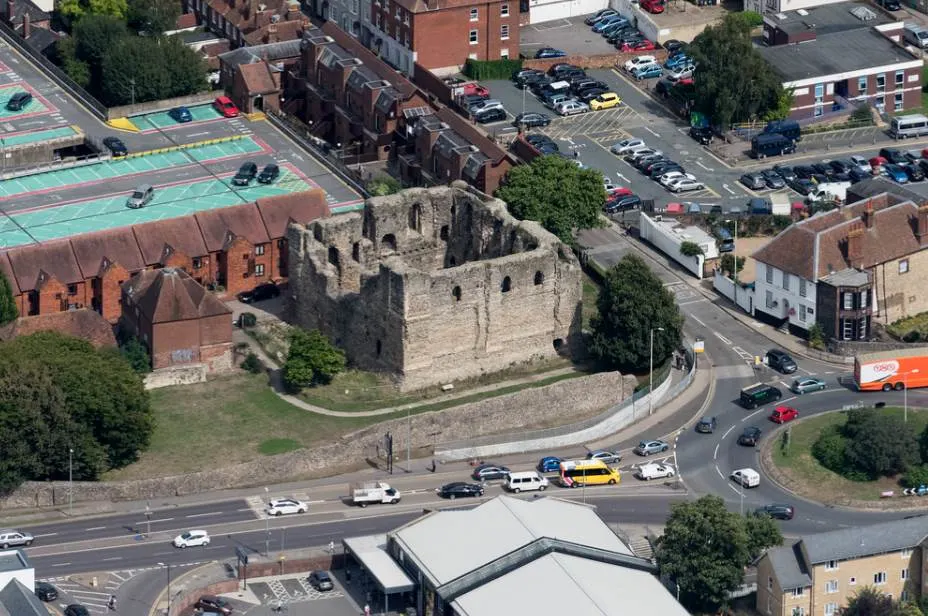
2. The first wooden castle was erected after the Norman Conquest of England
The first version of the castle was constructed shortly after William the Conqueror or “William I” arrived in England in the year 1066.
It served as a stronghold on the road from Dover to London, which was the road he took during his conquest in October of that year.
This was nothing more than a wooden motte-and-bailey castle that was constructed on a location where the Romans built a mound and a wall to protect the city.
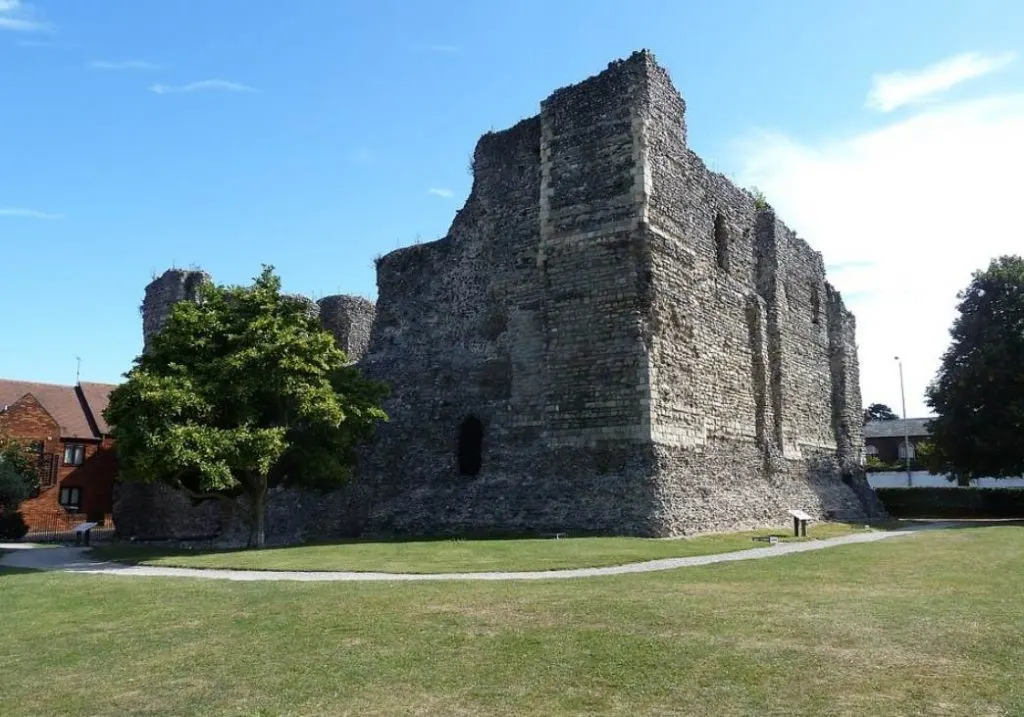
3. The stone castle was constructed in the early 12th century
Nothing of the original wooden structure remains today and just about the only part that we can still admire today is the massive keep.
This structure was constructed during the reign of King Henry I, a man who reigned over England between 1100 and 1135.
The keep was a massive structure that was constructed using flint and sandstone rubble. Upon completion, its base had dimensions of 30 x 25 meters (98 x 85 feet).
Although it’s partially destroyed now, it’s estimated it had a height of approximately 24 meters (80 feet). These numbers made it the fifth-largest keep in England during the Middle Ages.

4. It was one of the 3 royal castles that were erected in Kent
The most defining moment of the early phase of the Norman Invasion of England was the Battle of Hastings.
This event took place on October 14, 1066, just northwest of Hastings a coastal town in East Sussex. The Normans prevailed and started a building campaign to secure their territory.
This included 3 castles which all became royal castles in Kent. Apart from Canterbury Castle, they also constructed Dover Castle and Rochester Castle.
All of these were constructed in a strategic location along the ancient Roman road between Dover and London. Especially the castle in Dover had great importance as it has been referred to as “The Key to England.”

5. There are plans for the castle to reopen after its closure in 2018
Some of the most popular tourist attractions in Canterbury are the city’s magnificent cathedral and St Augustine’s Abbey.
These are landmarks that have added to the fact that Canterbury was inscribed as a UNESCO World Heritage site because of its stunning cultural value.
Unfortunately, Canterbury had to be closed in 2018 because of the poor condition in which the building found itself. It’s nothing more than a dilapidated ruin at the moment.
Regardless of this notion, voices have been raised to restore this historic landmark on the edge of the city. This means that it’s likely the castle will open to tourists again at one point.
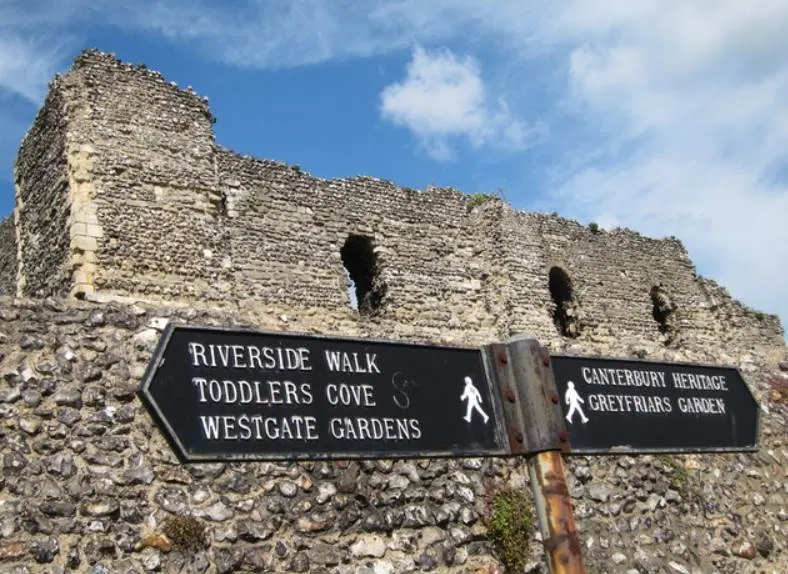
More interesting facts about Canterbury Castle
6. If you want to explore countless artifacts left behind by the Romans then you can visit the Canterbury Roman Museum. Remains of the temple and a remarkably well-preserved mosaic pavement are just a few of the treasures on display at this museum.
7. Whether or not a mound in Canterbury named “Dane John” was part of the ancient Roman fortification or the mound of William the Conqueror’s motte-and-bailey castle remains unknown. It’s located just southeast of the stone castle, right next to Canterbury’s city wall.
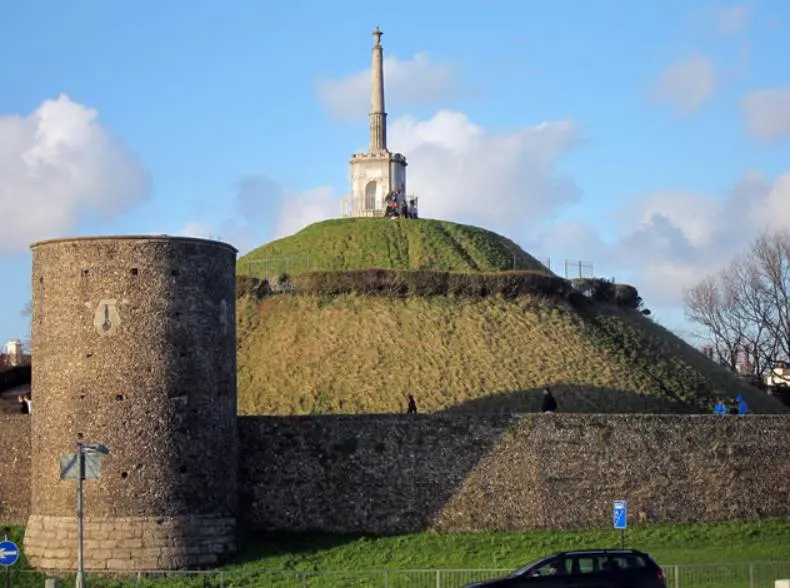
8. If this mound was part of William’s first wooden castle then it’s possible that the name” Dane John” was derived from the word “donjon.” this describes the fortified keep that was possibly located on top of the mound.
9. The castle was an important defense post in the aftermath of the Norman Conquest of England but it changed its purpose afterward. The castle was used as the county gaol or “county jail” by the 13th century and continued to serve this purpose for an extended period.
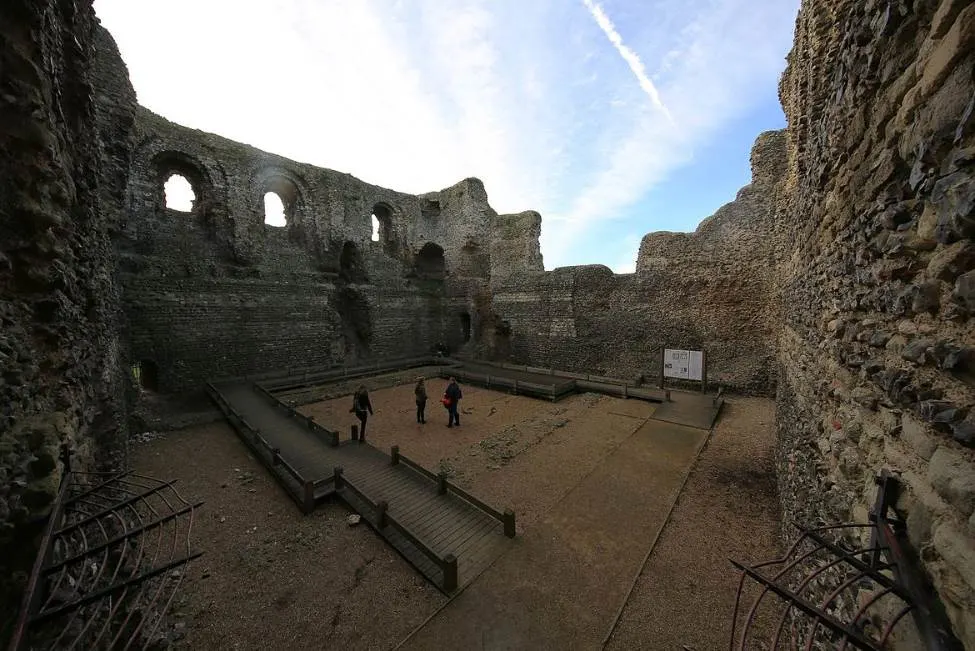
10. The castle briefly fell into the hands of the French during the First Barons’ War. This war took place between 1215 and 1217 as a group of disgruntled landowners rebelled against King John with the help of the French.
11. Because the castle was used as the county jail during the First Barons’ War, it didn’t see a lot of action anymore. The only notable event was the construction of a new gate in 1380 to further strengthen the prison’s security.
12. Canterbury Castle was acquired by a gas company in the 19th century. The company used it as a storage facility for gas for many years. This is the time that the castle lost its upper floor.

